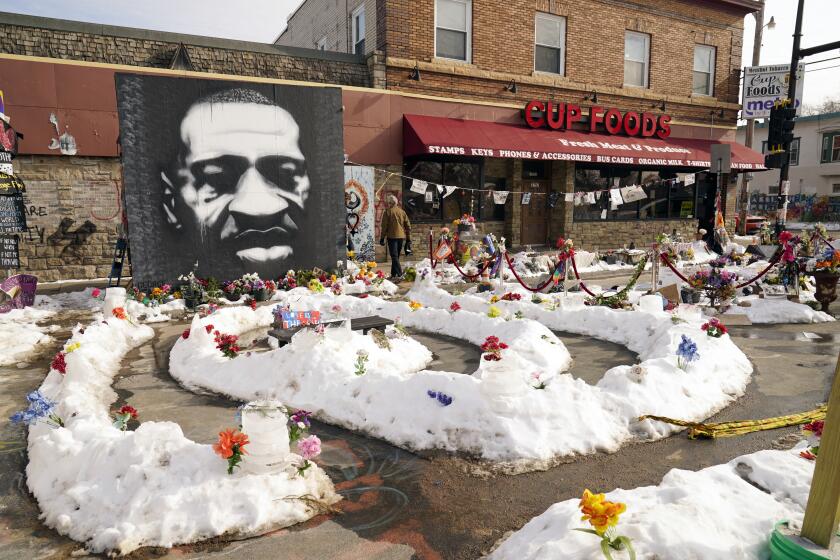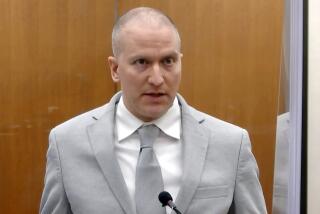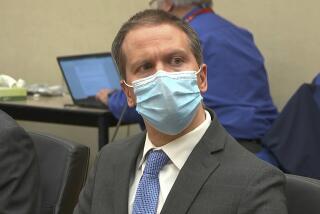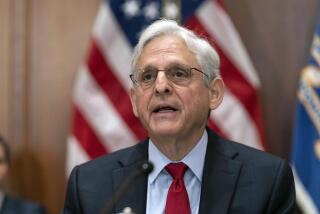Chauvin told onlooker Floyd was big, âprobably on somethingâ
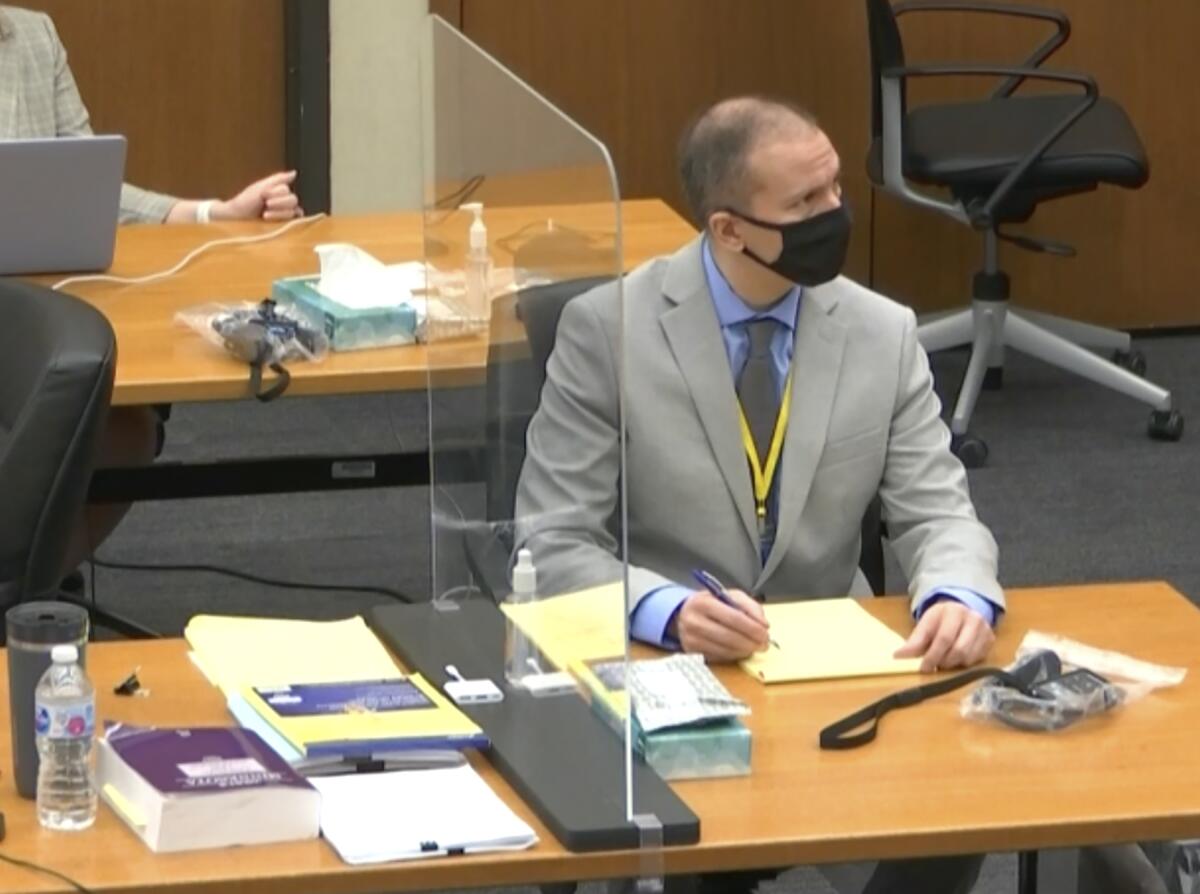
MINNEAPOLIS â After the ambulance took George Floyd away, the Minneapolis officer who had pinned his knee on the Black manâs neck defended himself to a bystander by saying Floyd was âa sizable guyâ and âprobably on something,â according to police video played in court Wednesday.
The video was part of a mountain of recordings â both official and amateur â and witness testimony at Officer Derek Chauvinâs murder trial that served to show how Floydâs alleged attempt to pass a phony $20 bill at a neighborhood market in May escalated into tragedy one video-documented step at a time.
A security-camera scene of people joking around inside the store soon gave way to the sight of officers pulling Floyd from his SUV at gunpoint, struggling to push him into a squad car as he writhed and screamed that he was claustrophobic, and then putting him on the pavement.
When Floyd was finally taken away by paramedics, Charles McMillian, a 61-year-old bystander who recognized Chauvin from the neighborhood, told the officer he didnât respect what Chauvin had done.
âThatâs one personâs opinion,â Chauvin could be heard responding. âWe gotta control this guy âcause heâs a sizable guy ⌠and it looks like heâs probably on something.â
Floyd was 6 feet 4 and 223 pounds, according to the autopsy, which also found fentanyl and methamphetamine in his system. Chauvinâs lawyer said the officer is 5 feet 9 and 140 pounds.
Chauvin, 45, charged with murder and manslaughter, is accused of killing the 46-year-old Floyd by kneeling on his neck for 9 minutes, 29 seconds, as he lay face-down in handcuffs. The most serious charge against the now-fired white officer carries up to 40 years in prison.
Floydâs death, along with the harrowing bystander video of him gasping for breath as onlookers yelled at Chauvin to get off him, triggered sometimes violent protests around the world and a reckoning over racism and police brutality across the United States.
Jurors were shown police body camera video of the approximately 20 minutes between when police approached Floydâs vehicle and when he was loaded into the ambulance.
When Officer Thomas Lane confronted Floyd in his SUV, drew his gun and demanded with a few expletives that he show his hands, a panicky-sounding Floyd said: âIâm sorry, Iâm sorryâ and âI got shot before.â Seemingly crying, he begged repeatedly, âPlease donât shoot me, man.â
Then, when told to get into the squad car, Floyd repeatedly yelled, âIâm not that kind a guy!â and âIâm claustrophobic!â As officers shoved his upper body and then his legs into the car, he writhed and screamed, âPlease! Please! ⌠I canât breathe!â
Officers were clearly exasperated as Floyd braced himself against the squad car and arched his body while the police tried to get him inside. At one point, he threw his upper body out of the car, and officers tried to push him back in.
Officers eventually pulled him out and brought him to the ground. Floyd thanked officers as they took him out of the squad car.
Once Floyd was on the ground â with Chauvinâs knee on his neck, another officerâs knee on his back and a third holding his legs â the officers talked calmly about whether he might be on drugs.
Lane was heard saying officers found a âweed pipeâ on Floyd and wondered if he might be on PCP, saying Floydâs eyes were shaking back and forth fast.
âHe wouldnât get out of the car. He just he wasnât following instructions,â Lane was recorded saying. The officer also asked twice if the officers should roll Floyd on his side, and later he said calmly that he thinks Floyd is passing out.
As Floyd was pinned down by Chauvin and other officers, McMillian, the bystander, could be heard on video saying to Floyd, âYou canât winâ and âGet up and get in the car.â
Floyd replied: âI canât.â
The defense has argued that Chauvin did what he was trained to do and that Floydâs death was not caused by the officerâs knee, as prosecutors contend, but by Floydâs illegal drug use, heart disease, high blood pressure and the adrenaline flowing through his body.
Events spun out of control earlier that day soon after Floyd allegedly handed a cashier at Cup Foods, 19-year-old Christopher Martin, a counterfeit bill for a pack of cigarettes.
Martin testified Wednesday that he watched Floydâs arrest outside with âdisbelief â and guilt.â
âIf I wouldâve just not tooken the bill, this couldâve been avoided,â Martin lamented, joining the burgeoning list of witnesses who expressed a sense of helplessness and lingering guilt over Floydâs death.
Martin said he immediately believed the $20 bill was fake. But he said he accepted it, despite believing the amount would be taken out of his paycheck by his employer, because he didnât think Floyd knew it was counterfeit and âI thought Iâd be doing him a favor.â
Martin then second-guessed his decision and told a manager, who sent Martin outside to ask Floyd to return to the store. But Floyd and a passenger in his SUV twice refused to go back into the store to resolve the issue, and the manager had a co-worker call police, Martin testified.
Martin said that when Floyd was inside the store buying cigarettes, he spoke so slowly âit would appear that he was high.â But he described Floyd as friendly and talkative.
Questions around race have been central to the murder case against the former Minneapolis police officer who knelt on George Floydâs neck.
After police arrived, Martin went outside as people were gathering on the curb and yelling at officers. He said he saw Officer Tou Thao push one of his co-workers. Martin said he also held back another man who was trying to defend himself after being pushed by Thao.
Wednesday morningâs testimony was briefly interrupted when a juror stood and raised her hand and gestured toward the door. She later told the judge that she had been feeling stress and having trouble sleeping but then told the judge she was OK to proceed.
More to Read
Sign up for Essential California
The most important California stories and recommendations in your inbox every morning.
You may occasionally receive promotional content from the Los Angeles Times.
